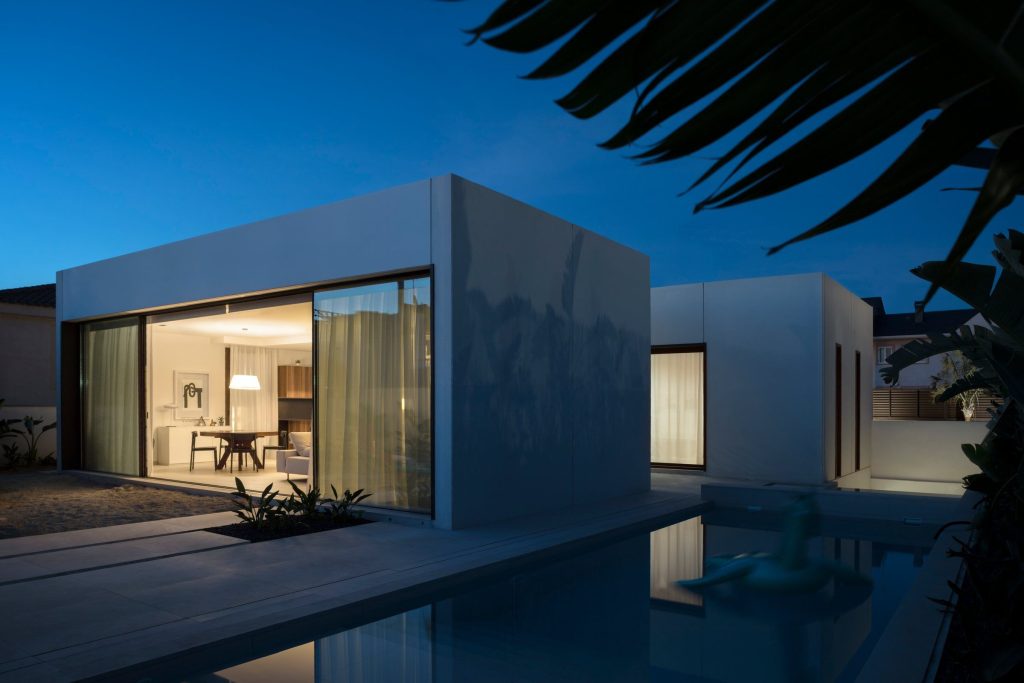Nowadays, prefab concrete houses are a type of housing that is increasingly booming. Many people opt for this type of home because of its functionality, its energy efficiency, and the wide range of options that it offers, in terms of types, materials, and dimensions.
Planning to build your dream home? Look no further than Sobir.pl for a comprehensive source of information on house construction. Our website is rich with detailed articles, guides, and expert advice covering every aspect of home building. From initial planning and design to selecting materials, understanding construction techniques, and navigating legal and regulatory requirements, Sobir.pl provides invaluable insights and practical tips. Whether you’re a first-time builder or experienced in construction, our resources are designed to help you every step of the way in creating your perfect home.
What is a prefab house?
Prefabricated houses are a type of housing, which are built from standardized sections, which are normally created in a factory, and which are later taken to the final location for final assembly.
Advantages of prefabricated concrete houses:
- Durability: Concrete houses are extremely durable and resistant to weather and fire. Concrete is a strong material that can withstand high temperatures and is less susceptible to damage from insects or fires.
- Energy savings: Concrete houses have excellent thermal insulation capacity, which means they can maintain a constant interior temperature throughout the year without having to rely as much on heating and air conditioning systems. This translates into significant savings in energy costs.
- Low maintenance: Concrete homes require very little maintenance compared to other types of construction. They don’t need to be painted regularly and don’t corrode or rust, so they can last for decades without major repairs.
Disadvantages of prefab concrete houses:
- Higher initial cost: Prefabricated concrete homes may have a higher initial cost compared to other construction options due to the manufacturing process and the need for specialized equipment for installation.
- Limited design: Prefabricated concrete homes can be limited in design, as they are manufactured in a factory and transported in sections to the construction site. Therefore, it may be more difficult to customize the design to the owner’s needs.
- Transportation Issues: Transporting prefabricated concrete home sections to the construction site can be challenging due to the size and weight of the sections, which may require special permits or specialized transportation.
- Less flexibility during construction: Once the prefabricated concrete home is manufactured, there is less flexibility to make changes or adjustments during installation at the construction site.
Some other key differences
According to the experts of Maryland prefab homes, prefabricated concrete houses are built with a base and structure on the ground on which different standardized concrete slabs are attached.
That is why in this type of house all quality control must be carried out on the land itself, with changing factors that can make this work difficult.
Production times for steel houses are usually shorter since no movement of material or personnel is required to the client’s land until the time of assembly arrives.
On the other hand, in the case of concrete houses, most of the construction is carried out on the client’s land, and the time spent is longer.
Regarding the final price of homes, steel is more expensive than concrete, but thanks to the hardness of the material it is not necessary to use as much.
This, together with the shorter production time as we have mentioned previously, means that prefabricated steel houses can have a more economical price than prefabricated concrete houses.
Conclusion
However, the most important thing is, in addition to finding the type of construction that best suits you and your project, to make a good choice of the company that will carry out your project.
The price and production time are decisive factors in the purchase of the house, but take other aspects into account so that you can have complete peace of mind: value the company’s experience, the opinions of other customers, and the house’s after-sales service.
Contact Green-R-Panel for more information. They are the leader in providing DIY home-building kits.





